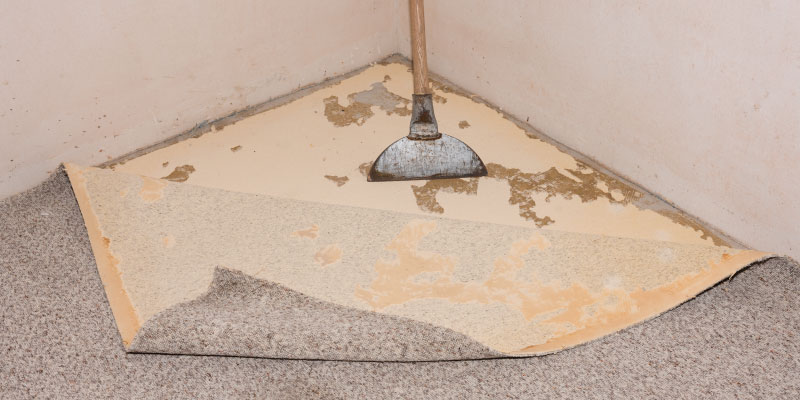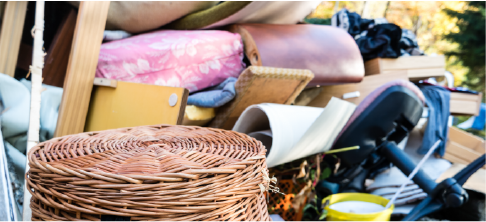
Updated October 10, 2023
Carpet removal might not be the most glamorous home improvement project, but it's a task that many homeowners will need to tackle at some point.
Whether you're replacing old carpet with new flooring or simply want to refresh your space, removing carpet yourself can save you a significant amount of money. However, like any DIY project, it's important to approach it with the right knowledge and know when to hire the pros instead.
In this article, we'll explore DIY carpet removal, when hiring a professional is best, and how carpet removal works, which will help you save money in the long run and ensure you get the job done right.
Table of Contents:
Find carpet removal near you
Why Remove Carpet Yourself?
Before diving into the tips, it's essential to understand why you might want to remove carpet yourself rather than hiring a professional. There are several compelling reasons:
- Cost Savings: Hiring professionals for carpet removal can be expensive, and the cost can quickly add up if you have a large area to cover. By doing it yourself, you can avoid labor fees and save money.
- Control: When you remove the carpet yourself, you have full control over the process. You can work at your own pace, ensuring that each step is done correctly.
- Learning Experience: DIY projects offer an excellent opportunity to learn new skills and gain a sense of accomplishment. Carpet removal is a manageable project for most homeowners and can be a great way to gain confidence in your DIY abilities.
- Customization: If you have specific plans for your floor after carpet removal, such as installing hardwood or laminate, doing it yourself allows you to customize the project to your liking.
How Carpet Removal Is Done
Now, let's delve into the DIY carpet removal process and various tips to ensure you can handle the task effectively...
1. Gather the Necessary Tools and Supplies
Before you start tearing up your carpet, make sure you have the following tools and supplies ready:
- Utility knife or carpet knife
- Pliers
- Pry bar or crowbar
- Gloves
- Safety goggles
- Dust mask
- Trash bags or disposal containers
- Knee pads (optional but recommended for comfort)
Having the right tools on hand will make the process smoother and safer.
2. Prepare the Room
Clear the room of all furniture and objects that could obstruct your work. This includes smaller items like lamps, decorations, and smaller pieces of furniture. For larger items, like sofas and beds, you may need to disassemble them or move them to another room.
3. Start with the Edges
Begin by using your utility knife to cut away the carpet along one edge of the room. Carefully make an incision near the wall, then use your pliers to grab a corner of the carpet and pull it up. Once you have a corner lifted, you can begin to peel the carpet away from the tack strips along the walls.
4. Remove the Tack Strips
Tack strips are narrow wooden strips with small, sharp nails that hold the carpet in place. Carefully use your pry bar or crowbar to detach the carpet from these strips. Be cautious not to damage the subfloor in the process.
5. Roll Up and Dispose of the Carpet
As you remove the carpet from the tack strips, roll it up tightly to make it easier to handle. If your carpet is in good condition, you might be able to donate or recycle it. Otherwise, dispose of it properly according to your local regulations.
6. Remove the Carpet Pad
Underneath the carpet, you'll typically find a carpet pad. This is often held in place with adhesive or staples. Use your utility knife to cut and remove the pad in sections. Be careful when handling the pad, as it can be heavy and may contain dust or allergens.
7. Clean the Subfloor
Once you've removed the carpet and pad, it's essential to clean and inspect the subfloor. Remove any leftover staples, nails, or adhesive residue. Make any necessary repairs to ensure a smooth and even surface for your new flooring.
8. Dispose of Waste Properly
Dispose of all carpet, padding, and other materials in accordance with your local waste disposal regulations. Some materials may be recyclable, so check with your local recycling center for guidance.
If you want to handle all the work yourself, renting a dumpster is a great option for disposing of the unwanted carpet. With a temporary roll-off dumpster, you'll be able to load the carpet into the dumpster yourself, go at your own pace, and get rid of other unwanted junk you have lying around your house in the process.
If you'd rather have someone else handle the physical removing of your carpet as well as the proper disposal, professional junk removal services are likely the best option. Junk removal services typically cost more than renting a dumpster but that cost gains you added convenience, efficiency, and safety.
Learn more:
- How Big of a Dumpster Do I Need for Carpet?
- DIY vs. Professional Junk Removal: Which Option Is Right for You?
9. Consider Professional Help for Difficult Areas
In some cases, you may encounter challenges during the carpet removal process, such as extremely stubborn adhesive or damaged subflooring. If you're uncomfortable tackling these issues on your own, it's wise to consult a professional to avoid potential complications.
Removing carpet yourself can be a rewarding DIY project that saves you money and allows you to customize your home's flooring. However, it's important to ensure that the job is done right and that your room is ready for whatever flooring option you choose to install.
If you do the work yourself, but you do it wrong, you'll end up paying more in the long run. Remember to take your time, prioritize safety, and be prepared for any unexpected challenges that may arise during the process. With the right tools and a little patience, you can transform your space and enjoy the satisfaction of a job well done.
With that said, DIY isn't the only option. In fact, in many cases, hiring a professional is the smarter and more cost-effective choice.
Find carpet removal near you
Why Hire a Professional to Remove Carpet?

The easiest way to get rid of old carpeting is to hire a junk removal company to come and haul it away or to assist with the total removal.
Junk removal companies are committed to donating or recycling as much as possible, with carpet being no exception. To confirm your carpet is going to the right place, you can confirm with the companies you speak to how they plan to dispose of your old carpet. Donating and recycling is typically less expensive than disposing of something at a landfill, so if your carpet is salvageable, you could save a little bit of money by having it taken to the nearest donation center, like a Habitat for Humanity ReStore, or recycling facility.
Carpet removal via junk removal services is easy:
- Contact multiple junk removal companies for quotes via Hometown to compare pricing, availability, and customer service.
- Once you've decided which company is the right choice for the job, schedule a time for removal. Because junk removal quotes typically need to be provided on-site, they can often get started right away if you choose.
- After the junk removal company has removed and hauled away the carpeting, you'll receive an invoice with the balance owed.
Be sure you hire the right person to handle your carpet removal project with the help of Hometown.
Easily request quotes from multiple pros in your area, read verified customer reviews, and get answers to common carpet removal questions, all from one place so you can get your project done faster and for less money.
Keep reading:


